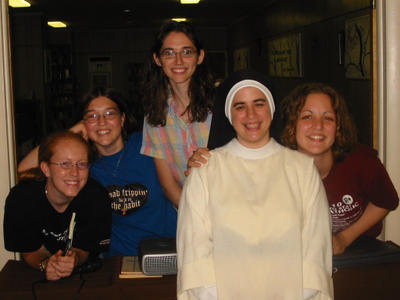
Italy, “Roman Catholic” country.
December 1970: the Baslini-Fortuna Act introduces divorce, because “all civil countries have it”. A large number of Democrazia Cristiana (DC, “Democrats-Christians”, 35-45% of votes) party members did not fight against it, leaving Communists promote and approve it.
May 1974: a referendum against divorce fails. A great delusion for Pope Paul VI, who saw all main Roman Catholic associations giving up. The most known and famous organization, Azione Cattolica (“Catholic Action”), stated something like “vote as you like” instead of “vote against divorce”. DC, again, didn't actually fight against divorce.
December 1975: an Abortion Act got some primary approval by Parliament Chambers, because media were continuously talking about “10,000-20,000 illegal abortions per year” (today we know that the true count was 700 to 1500 abortions per year in Italy) and because “all civil countries have it”.
While majority of Parliament members was against abortion, DC did not vote against it; Prime Minister Aldo Moro (DC) stated the “neutrality” of the Government about abortion.
Summer 1976: elections: Partito Comunista Italiano (“Italian Communist Party”) got 34% of votes (its historical maximum), DC got 35% of votes (its historical minimum).
Spring 1978: a large number of DC members accepted the abortion law because of communists pressure.
May 1978: Aldo Moro, kidnapped by
Brigate Rosse (“Red Brigades”, a communist terrorist group) two months before, was killed.
June 1978: the Abortion Act (the infamous “law 194, year 1978”) got the final approval, thanks to absence of 33 Parliament members (all of them were against abortion but did not go to vote against that law) and no true battle from DC members.
Giulio Andreotti, DC, Prime Minister, had the last chance to stop the law: resigning. He did not resign. His government was eventually sunk a few months later.
In the very first years after the abortion law passed, there were some 15,000-25,000 abortions
per month.Spring 1981: a referendum against abortion fails (56% only voted pro abortion). Two months after, Alì Agčà shot Pope John Paul II.
Italian Health Ministry has confirmed that
in Italy there were 4,602,117 abortions from 1978 to 2005.In Italy, in 2003, the cost of an abortion in our Health structures was something like 1700 euro - about 2300 US$.
Photo above:
“Mom, I love you! Don't kill me!” - this advertisement of
S.O.S. vita (“S.O.S. Life”) has been condemned by a court and wiped out, because it was “hurting” for people willing to kill a baby (that is, “abortion”).
Yes, that's Italy, “Roman Catholic” country.





















 Italy: abortions slightly "diminishing"
Italy: abortions slightly "diminishing" Italy, “Roman Catholic” country.
Italy, “Roman Catholic” country. Published since late 40's, Famiglia Cristiana (“Christian Family”) is an Italian weekly magazine published from Society of St. Paul for Roman Catholic readers, currently targeting housewives and older women.
Published since late 40's, Famiglia Cristiana (“Christian Family”) is an Italian weekly magazine published from Society of St. Paul for Roman Catholic readers, currently targeting housewives and older women. Italy is a weird place.
Italy is a weird place. Maurice Pinay, Complotto contro la Chiesa, (“The Plot against the Church”).
Maurice Pinay, Complotto contro la Chiesa, (“The Plot against the Church”). Edition 2007 of “Meeting for Friendship Among the Peoples” (also known as “Meeting di Rimini”, that is, “Rimini Meeting”) will be held in Rimini, Italy, from August 19 to August 25.
Edition 2007 of “Meeting for Friendship Among the Peoples” (also known as “Meeting di Rimini”, that is, “Rimini Meeting”) will be held in Rimini, Italy, from August 19 to August 25. In this holy heroic place, on August 18, 1944, six people from Molinella fell down because of our lead, superb example of love to the ideal.
In this holy heroic place, on August 18, 1944, six people from Molinella fell down because of our lead, superb example of love to the ideal.